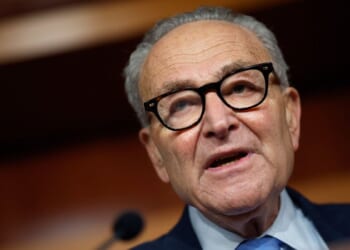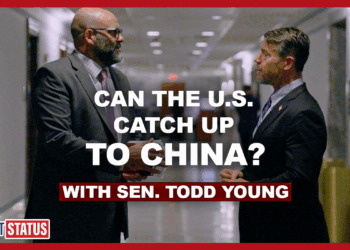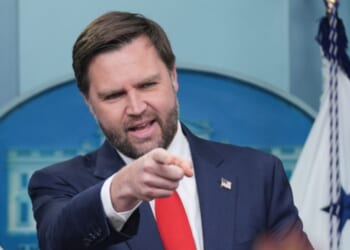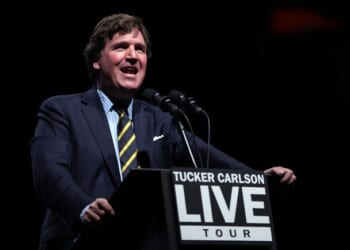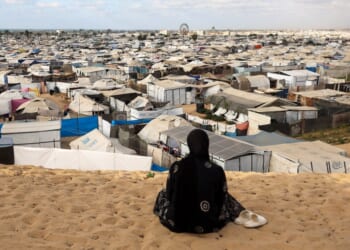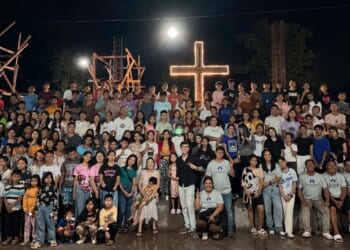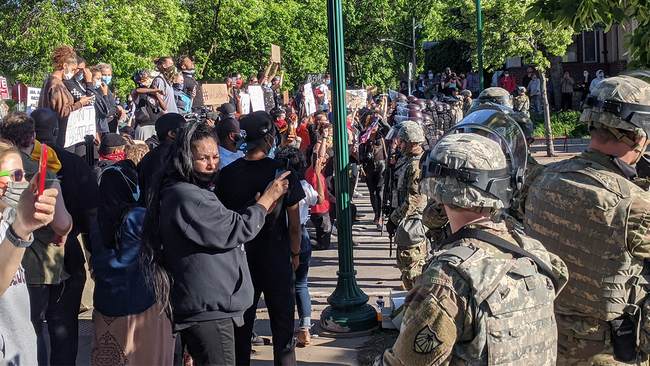
The Mission Changes
The National Guard, for generations, has been the neighbor in uniform who shows up with the guano splats against the fan: river flooding, tornadoes, or a major winter storm.
Their mission, carried out with uncanny professionalism, was rooted in relief and recovery, but it is changing. Military leaders have ordered every state and territory to create a “Quick Reaction Force” (QRF) trained not for natural disasters, but for riots. The stated purpose: maintain order during civil unrest.
The Order’s Scope
It’s a sweeping plan in which each state Guard unit must form around 500 troops, equipped and drilled for rapid deployment within American cities.
Within eight hours, around 25% of each unit is expected to be ready, followed by the rest within 24 hours.
Most units are expected to be operational by early next year. Supporters say the move provides uniform readiness, while skeptics call it domestic militarization by another name.
History’s Warnings
History holds its breath whenever soldiers are ordered to stand watch over their own people.
Standing in the doorway of Little Rock Central High in 1957 was the Arkansas National Guard, not protecting liberty, but blocking it. Acting under orders from Gov. Orval Faubus, guardsmen prevented nine black students from entering the school in open defiance of the law. Images of armed soldiers turning away children from school shocked the world. It took President Dwight D. Eisenhower’s actions to federalize the Guard, deploy the 101st Airborne Division, and have those same troops change sides, escorting students safely through the front doors they had recently barred.
It was an unmistakable lesson, where the National Guard’s loyalty must remain to the Constitution, not the political whims of any single leader.
Thirteen years later, tension turned fatal in the 1970 Kent State tragedy, which involved a moment of tension between the Guard troops and students. The tragic misunderstanding of the mission left four students dead and a divided nation. Never does history forget when soldiers are standing watch inward instead of outward.
It’s a timeless lesson: troops trained for war rarely fit neatly into civil-order missions. Lines get blurred, and one single incorrect command echoes for decades.
Federal Reach and State Rights
Critics are screaming “federal overreach,” but they forget one thing: state sovereignty cuts both ways. Our Founders designed a system where the federal government steps in when states refuse to protect their citizens.
During the 2020 Summer of Love, we saw Democratic governors refuse offers of help as their cities burned. President Donald Trump hasn’t forgotten those times or the Americans who paid for them. This order gives every state a framework to act quickly, before the violence metastasizes, restoring accountability and replacing the paralysis that left so many communities vulnerable.
President Trump isn’t declaring martial law; he’s using common sense. The National Guard has always been a citizen force, our neighbors in uniform who answer when sirens wail.
The policy set forth by President Trump simply ensures they can respond faster and with greater authority. Control remains with the governors, but the federal chain of command becomes solid enough to prevent bureaucratic gamesmanship when lives are on the line.
What It Means on the Ground
The change will be felt in moments of crisis for everyday Americans. If protests spiral into violence, if law enforcement is overwhelmed, QRFs fill the vacuum with structure instead of chaos.
This policy is the difference between oppression and deterrence, where Minneapolis or Philadelphia shop owners no longer have to board up their livelihoods and pray for the cavalry to arrive.
Police, under this new policy, won’t be left holding the bag when local leaders cower in fear or distrust. It also means the public can exercise their First Amendment rights to protest peacefully without being overshadowed by criminals who thrive in confusion.
The Question of Readiness
Natural disasters have long defined readiness, and Trump redefined it to include man-made ones.
America has a great many plans for floods and evacuation routes, but for civic breakdown? Not so much.
Filling that gap is the modernization of the National Guard. Our troops don’t become occupiers by training for riot response; it readies them for the world as it is.
We live in an era of flash mobs, cyber-driven unrest, and organized agitators, so the president isn’t overreacting; he’s just correctly reading the moment.
The Need for Guardrails
Luckily, President Trump understands the balance between power and restraint, that guardrails must be in place, and that transparency matters.
There’s a clear command structure and accountability measures put in place under Trump’s order, preventing mission creep. Every deployment answers to constitutional authority, not politics. Domination isn’t the goal; it’s deterrence through strength — the old lesson rediscovered here at home.
Final Thoughts
“Always Ready, Always There,” the Guard’s motto, isn’t merely a slogan anymore. Under President Trump, it becomes a living standard, turning a scattered patchwork of state readiness into a national framework that values both order and liberty.
We don’t need to fear our own soldiers; we need to trust them to do what politicians too often will not: stand firm when chaos knocks on the door.
Yes, Readiness has been redefined, but it was completely overdue.
In Trump’s America First, the Guard doesn’t need permission to protect the people it serves.
Your Front-Row Seat to the Shifting Battlefield
Get the full story on how America’s military preparedness is being redefined at home. Our PJ Media VIP team delivers insider context, constitutional analysis, and first-person accounts from those who’ve worn the uniform. Join today!


